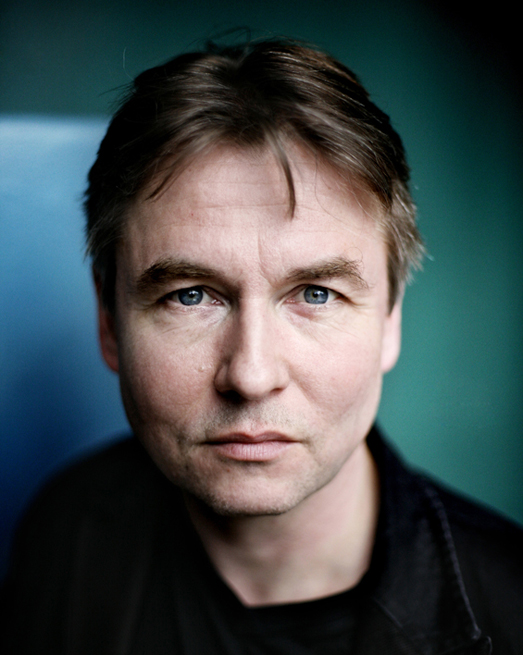Philharmonic Biennial to offer a smorgasbord of new music

Esa-Pekka Salonen will premiere a new composition of his and conduct the U.S. premiere of Gerald Barry’s “The Importance of Being Earnest” at the second New York Philharmonic Biennial.
The New York Philharmonic began the season with an intriguing “save the dates” in their schedule—their second NY Phil Biennial. Set for May 23 through June 11, the orchestra had previously only announced the U.S. stage premiere of Gerald Barry’s opera The Importance of Being Earnest (June 2–4 in the Rose Theater at Lincoln Center), conducted by Ilan Volkov and co-presented by Lincoln Center’s Great Performers series. There were hints that Esa-Pekka Salonen would play a substantial part, but nothing more.
Earlier this week the Philharmonic announced the full Biennial schedule, and a series designed to broaden the range of the orchestra and audiences is set to carve out substantial and unexpected new territory in its second iteration. Music director Alan Gilbert and Salonen are co-curaingd the Biennial, and their choices range from the acoustic to the electronic, the new and the familiar, the old and the very young.
Salonen, this season’s composer-in-residence, has a world premiere work set for the concluding, June 11, concert, which will be led by Gilbert. On that program, the Philharmonic will also play the U.S. premiere of Per Nørgard’s Symphony No. 8. Prior to that, composer Steve Stucky will conduct the Aspen Music Festival and School’s Aspen Contemporary Ensemble in Salonen’s Catch and Release on June 8, written as a complement to Stravinsky’s The Soldier’s Tale. This will be the work’s NY premiere, likewise for the remaining program, which has music by Thomas Kotcheff, Nina C. Young, Christopher Stark, Stephen Hartke, and Stucky. The concert will be at the Whitney Museum of American Art.
Youth is the hallmark of the Biennial. The Interlochen Arts Academy Orchestra will play music by young American composers—Ashley Fure, Gabriel Kahane, and Hannah Lash, along with Nico Muhly and Jennifer Higdon—June 5 at David Geffen Hall. The day before, Philharmonic musicians and teaching artists will play music coming out of the orchestra’s Very Young Composers program. The music of teenage and pre-teen composers Mia Micic, Nina Moske, Chi-Chi Ezekwenna and Aidan Ng will be complemented by work from Angelica Negrón and Paolo Prestini (June 4, National Sawdust).
To start the Biennial, JACK Quartet will premiere pieces by Marc Sabat, Derek Bermel, and experimental composer Cenk Ergün at 92Y (May 23). Classics of modernism will be heard through the “Ligeti Forward” concerts, June 3–5 at the Metropolitan Museum, with Gilbert leading Ensemble of the Lucerne Festival alumni in the Ligeti concertos, along with music by Unsuk Chin, Gérard Grisey, Dai Fujikura, John Zorn, and others.
The academy will have a substantial presence as well, with a May 25 concert at the Greene Performance Space from the Yale School of Music of music and associated composers old and new—Ives, Martin Bresnick, David Lang, Hannah Lash, et al—while the Orchestra of the League of Composers will play Huck Hodge, Felipe Lara, Charles Wuorinen and Paul Moravec at Miller Theatre (June 1). There will be more concerts at National Sawdust, with violinist Jennifer Koh playing short pieces by more than thirty composers on May 24 and 31, and Brooklyn Rider presenting “Works Inspired by New York City’s Downtown Music Scene” on June 3.
The biggest surprise is the Biennial adopting the New York City Electroacoustic Music Festival, June 5–7 at National Sawdust. These will be concerts of pure electroacoustic music, including live electronic and computer processing, media, sound, and acoustic instruments, all in a surround-sound environment. Submissions are currently being accepted through www.nycemf.org, so whatever is heard promises to be absolutely of the moment.







Posted Oct 29, 2015 at 2:32 pm by Lewis Martin
A question about the NYPO if anyone is reading. Over the years I have noticed that when visiting orchestras like the LSO play at Avery Fisher Hall (I cant quite do the name change yet), they always play with winds raised above strings, brass and percussion raised above winds. I always find the sound more live, more detailed, and cleaner than any NYPO concerts I go to, where the band is resolutely all glued to the floor on the same level – the sound is muddy, detail s obscured – and from the orchestra floor you cant see beyond the first row of strings. Anyone else have this experience. The result for me is that, unless a major maestro is leady the NYPO, I never attend their concerts, but only visiting orchestras at AFH/GH and Carnegie Hall.